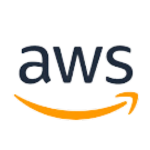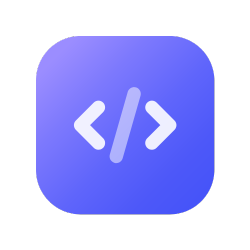Kubernetes from A to Z
exkl. MwSt.
Trainingsprogramm Fakten
Key learnings
● Build, test, and publish Docker container images
● Become familiar with YAML files that define Kubernetes objects
● Understand core Kubernetes user concepts, including pods, services, and deployments
● Use kubectl, the Kubernetes CLI, and learn about its commands and options
● Understand the architecture of Kubernetes (control plane and its components, worker nodes, and kubelet)
● Learn how to troubleshoot Kubernetes deployments
● Apply resource requests, limits, and probes to deployments
● Learn Containerization and Autoscalling
● Manage dynamic application configuration using ConfigMaps and Secrets● Deploy other workloads, including DaemonSets, Jobs, and CronJobs
● Learn user-facing security with SecurityContext, RBAC, and network policies
● Learn how to be familiar with CI/CD Tools
Anforderungen
● Knowledge of Linux concepts and the command line as well as general Networking knowledge is required.
Programm Inhalt
Module1: Create First Container
Chapter 1: Basic concepts, history, alternatives
● You will learn what Kubernetes is, where it comes from, and why you
should get to know it
● Use kubectl, Kubernetes CLI, Commands and Options
Chapter 2: Construction of the cluster
● You will learn what Kubernetes-Architecture and basic components a
Kubernetes cluster is made of.
● Installation methods and available versions
● You will learn a list of the most popular Kubernetes installers and their
cloud providers.
Module2: APIs
Chapter 3: Kubernetes API 5
● You will understand what communication inside the cluster looks like and
what are the core components of the Kubernetes API.
Chapter 4: Cluster launching
● You will run a Kubernetes cluster locally and learn at least two ways to
connect to it. You will build image and create your first container in
Kubernetes.
Module3: Pods & Deployment
Chapter 5: Pod basics
● You will learn about how DNS works in a cluster and how applications
connect to each other and are published outside the cluster.
● You will take a closer look at the core component of an application in
Kubernetes – pod.
● You will learn how Pod differs from a container. You will run the pod
application, monitor and change it.
Chapter 6: Pod in details
● You will learn the advanced Pod settings necessary for your application
Chapter 7: Other Kubernetes APIs
● You will learn about the other core objects in the Kubernetes API such as
Node, ConfigMap, and Secret.
Chapter 8: Running an application in Kubernetes
● You will learn what, apart from the feed itself, is also needed to run an
efficient application in Kubernetes.
● You will learn to do zero-downtime-deployment using Kubernetes
● Manage dynamic application configuration using ConfigMaps and Secrets
● Deploy other workloads, including DaemonSets, Jobs, and CronJobs
Module4: Networking and Application Installation
Chapter 1: Service Discovery in Kubernetes
● You will learn how the network works in Kubernetes
● ClusterIP, NodePort and Load Balancer
Chapter 2: Ingress
● You’ll learn what Ingress is in Kubernetes, how to use it, and why it’s
worth it.
Chapter 3: Persistent data in the cluster
● You will learn what volumens are, how they are created and assembled.
● You will meet StatefulSet and find out why it is unique
Chapter 4: Helm
● Define, install and upgrade Kubernetes Applications with Helm
● You will understand what Helm is and how to use it for releases.
Module5: Application Autoscalling
Chapter 1: Kubernetes and Gitlab 6
● You will configure Gitlab to work with Kubernetes and automatically
release the app.
Chapter 2: Other ways to start the application
● You will learn about one-time tasks defined by Job and CronJob
● You will learn how DaemonSet starts Pods
Chapter 3: Autoscale
● You will practice how to autoscale an application in Kubernetes
Module6: Monitoring and Security
Chapter 1: Portainer
How to deploy software containers across your fleet of Edge devices
securely.
Chapter 2: Logging
Chapter 3: Monitoring
Chapter 4: Security and Network Policy
Network policy
Applying a NetworkPolicy
Security Context
Run As User/Group
Service accounts
Role-based access control
Module7: CI/CD Tools
Chapter 1: Working with multiple Environments
Chapter 2: CI/CD tools
Jenkins, Bamboo, Maven, Selenium, Puppet, Terraform, Ansible, Grafana,
Prometheus
Chapter 3: Project Exercises
Module8: CI/CD Exercises
Using Jenkins, Bamboo, Maven, Selenium, Puppet, Terraform, Ansible,
Grafana, Prometheus
Module9: Cluster Operations
Onboarding new applications
Backups
Upgrading
Drain and cordon commands
Impact of an upgrade to running applications
Troubleshooting commands
VMware Tanzu™ portfolio overview
Module10: Performance & Containerization
Chapter 1: Performance optimization with Uvicorn
Chapter 2: Deployment (Heroku Serverless and Nine Remote)
Chapter 3: Containerization (Docker & Kubernetes)
Fragen zum Programm?
Haben Sie Fragen zum Programm?
Ich möchte dieses Programm als Firmenprogramm buchen
Kubernetes from A to Z
Jetzt Anmelden
Kubernetes from A to Z
15.09.2025
26.09.2025
exkl. MwSt.
Zürich Airport








